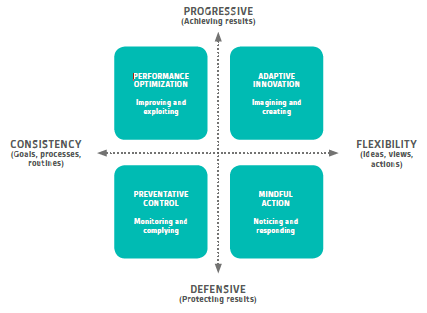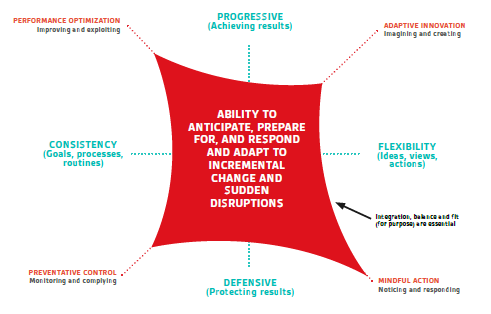 Why are some organisations more successful in coping with—and responding to—today’s fast-changing business environment? And why do some organisations see only the negative aspects of adversity, while others see opportunities to adapt and change? The answer, in a nutshell, lies in organisational resilience.
Why are some organisations more successful in coping with—and responding to—today’s fast-changing business environment? And why do some organisations see only the negative aspects of adversity, while others see opportunities to adapt and change? The answer, in a nutshell, lies in organisational resilience.
But business leaders looking for clear-cut advice on how to build or enhance their businesses’ organisational resilience are often disappointed, not least because of the conflicting guidance found across a variety of information sources.
In order to address this challenge, Cranfield School of Management teamed up with international standards organisation BSI to review and assess this body of thought on organisational resilience - over 600 academic papers, together with books and reports - in order to distill a set of practical insights and guidelines.
The organisational resilience ‘tension quadrant’
Most of the thinking on organisational resilience can been split between approaches that are defensive (in other words, focused on stopping bad things from happening), and those that are progressive (focused on making good things happen). In addition, the way in which resilience can be achieved is by means of practices and behaviours that accomplish either consistency or flexibly.
Visualised as a quadrant, we can see that progressive and flexible behaviours involve re-imagining and re-creating the organisation in order to generate radical change. On the other hand, in the lower left quadrant, an ‘opposite’ set of behaviours involves defensively maintaining the status quo by monitoring and ensuring compliance in order to control and enforce a level of consistency or uniformity.
A similar polarity is seen between the upper left part of the quadrant, and the lower right part: progressively improving the organisation by exploiting existing knowledge, skills and resources, versus defensively noticing and responding to problems and challenges in order to minimise disruption and mitigate consequences.

What is important to realise is that all four of these approaches, in the right circumstances, can result in organisational resilience. So it’s hardly surprising that leaders seeking to enhance their organisation’s resilience have received conflicting guidance.
Developing your own organisational resilience quadrant
But for an organisation—or a leader—to fixate on any one approach is inevitably constraining and can lead to problems .
True organisational resilience calls for simultaneously managing the tensions between the four approaches, creating fit for purpose approach, blending defensive and progressive thinking according to the organisation’s purpose, its operations, the ‘clock speed’ of its industry, and the prevailing level of uncertainty.
As such, the ‘shape’ of the quadrant will alter from organisation to organisation, reflecting differing degrees of focus and combinations of the quadrant’s four key approaches: ‘preventative control’, ‘mindful action’, ‘performance optimization’, and ‘adaptive innovation’.

So organisations with (say) a high potential for accidents—such as energy production, transport, mining, and construction—will for instance tend to be weighted towards the preventative control (‘defensive’ and ‘consistent’) sector of the quadrant. Fast-moving hi-tech startups, on the other hand, will have a quadrant weighted towards the adaptive innovation (‘progressive’ and ‘flexible’) sector of the quadrant.
Where to start?
But it’s one thing to describe an organisation-specific organisational resilience tension quadrant—and quite another to actually build one.
Yet this is the challenge facing senior organisation leaders.
We’ve also developed a methodology, 4Sight, aimed at helping those in organisation’ leadership roles to introduce and sustain organisational resilience by developing four perspectives on change: foresight, insight, oversight and hindsight.
So to read our blog on 4Sight, click here.





